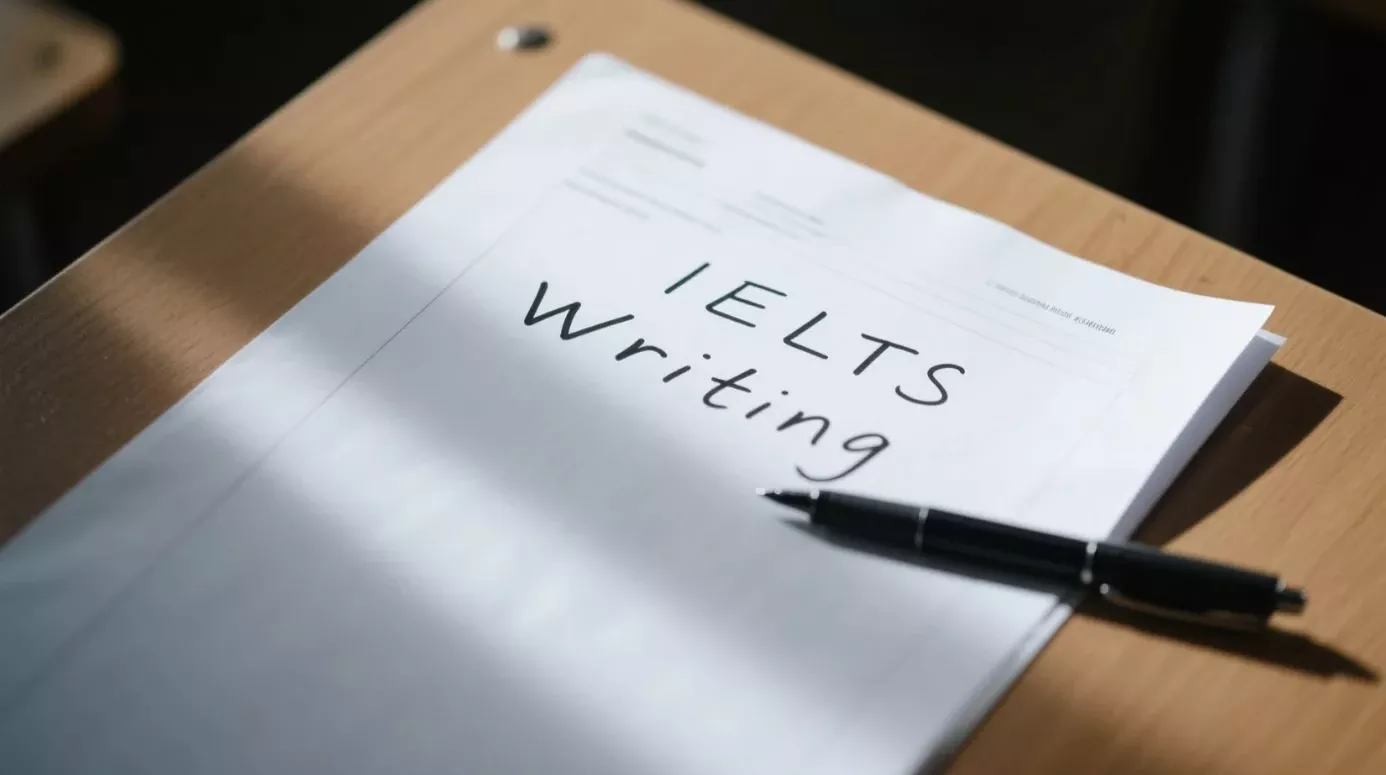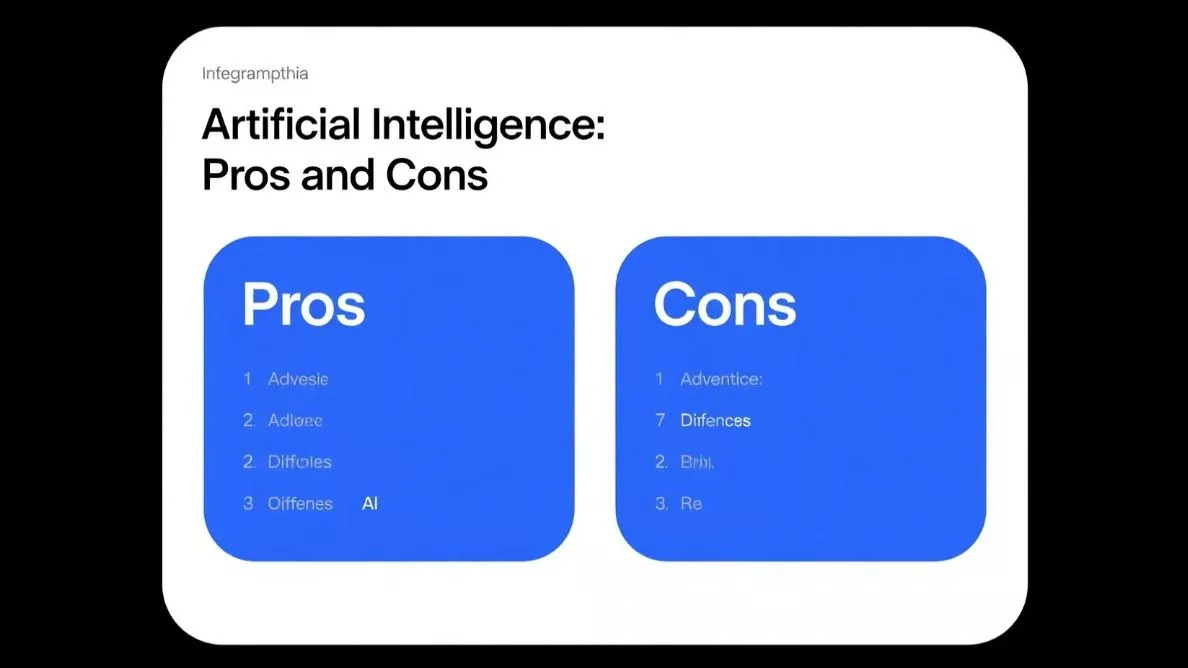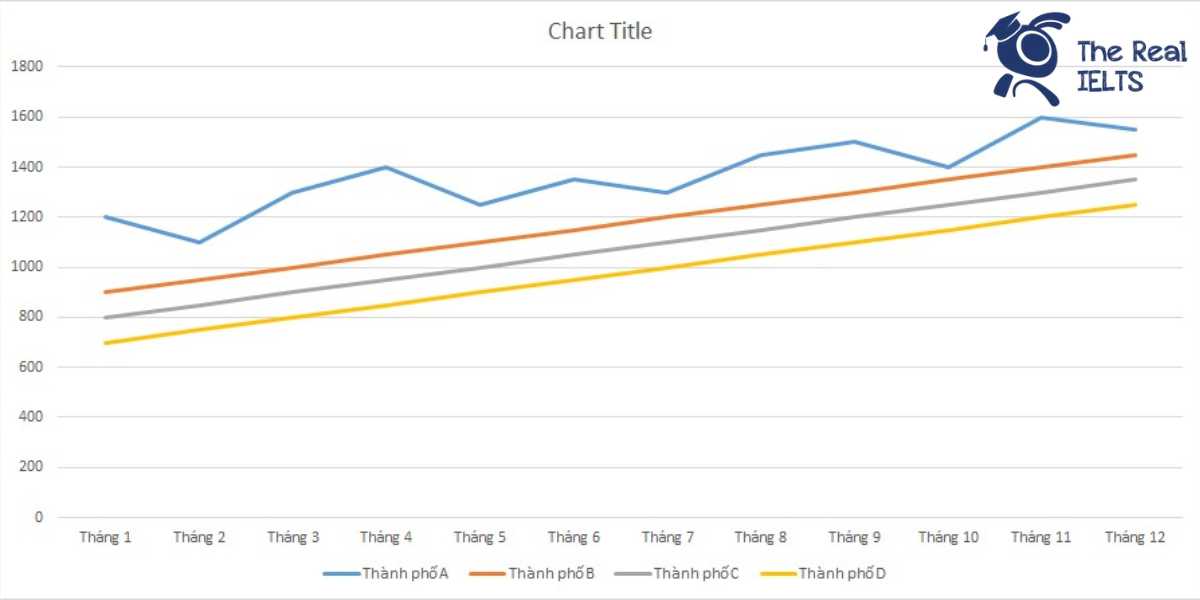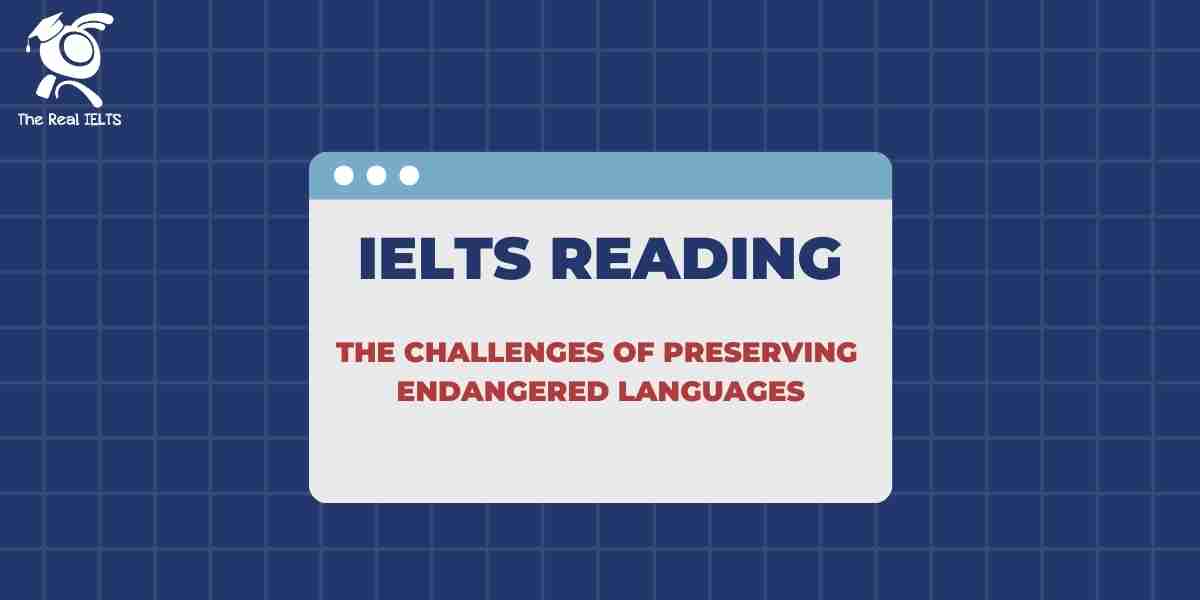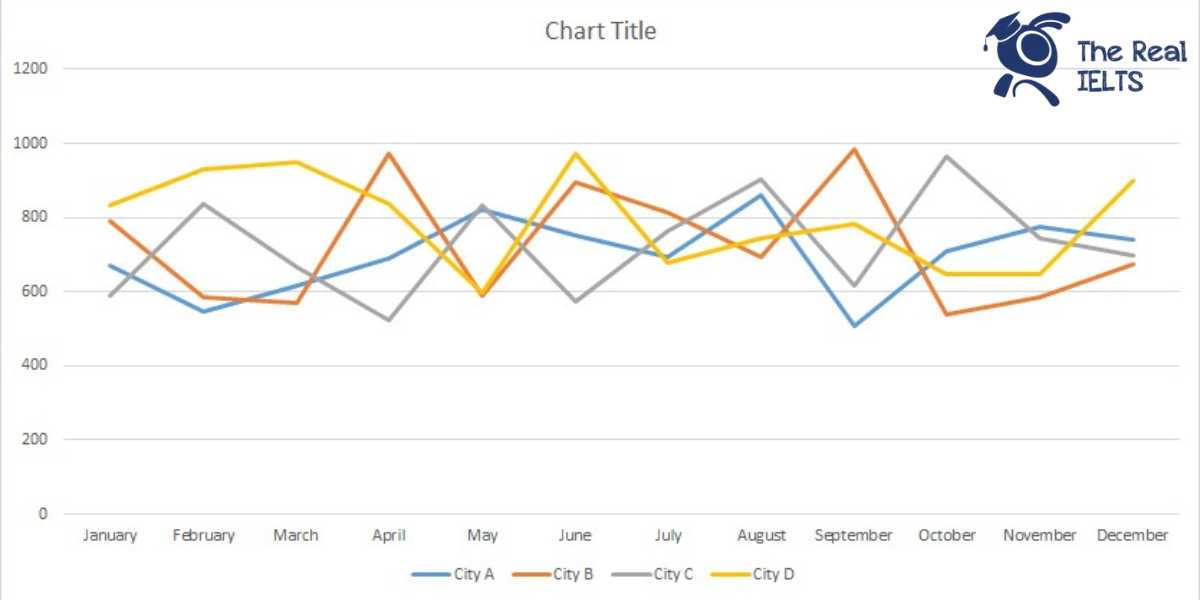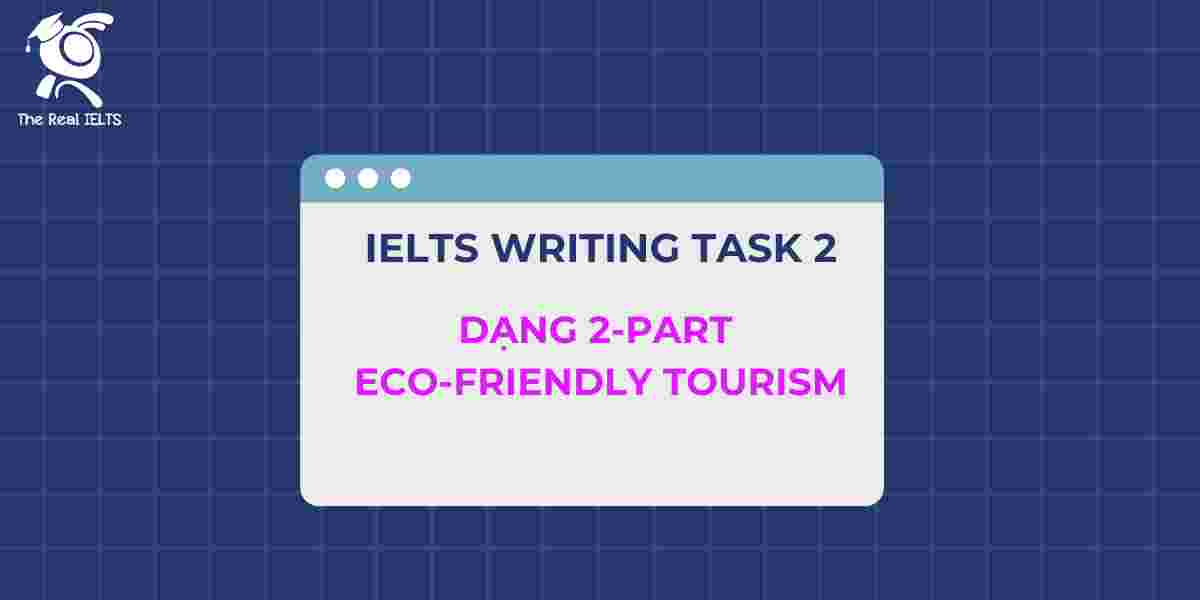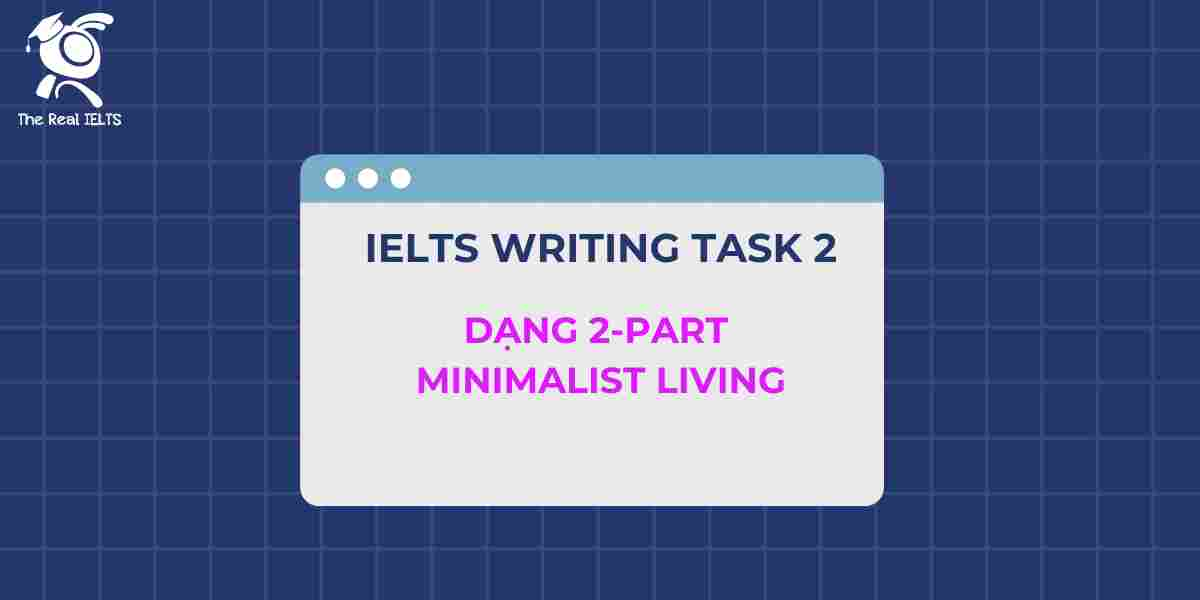Kỹ năng viết trong kỳ thi IELTS luôn là thử thách lớn đối với thí sinh, đặc biệt ở IELTS Writing Task 2 Phần 79, nơi yêu cầu khả năng lập luận chặt chẽ và sử dụng ngôn ngữ học thuật chính xác. Để đạt band điểm cao, người học cần nắm vững cấu trúc bài viết, phát triển ý tưởng rõ ràng và tránh lỗi ngữ pháp phổ biến. Một chiến lược luyện tập hiệu quả không chỉ nâng cao kỹ năng mà còn xây dựng sự tự tin khi làm bài.
Đọc thêm: IELTS Writing Task 2 Phần 78
Đề 1 IELTS Writing Task 2
Some people believe that governments should spend more money on public transportation to reduce traffic congestion and pollution. Others argue that individuals should take responsibility for their own travel choices. Discuss both views and give your own opinion.
Bài essay (Band 6.5)
In many cities, traffic congestion and pollution are serious problems. Some people suggest that governments should invest more in public transportation, while others believe individuals should manage their own travel choices. This essay will discuss both perspectives and explain why I support government investment.
On the one hand, those who favor government spending argue that public transportation can address pressing issues like traffic jams and air pollution. By improving buses, trains, and subways, governments can encourage people to use these services instead of private cars. For example, cities like Singapore have efficient public transport systems, which reduce the number of vehicles on roads. Moreover, public transport is often more environmentally friendly, as it produces less pollution per person compared to cars. Therefore, government funding could bring about significant improvements in urban areas.
On the other hand, some people believe individuals should be responsible for their travel decisions. They argue that people choose cars for convenience and flexibility, and it is their right to do so. For instance, in rural areas where public transport is limited, driving is often the only practical option. Additionally, individuals can take proactive steps, such as carpooling or cycling, to reduce their environmental impact. This view emphasizes personal freedom and responsibility over government intervention.
In my opinion, while individuals can make better choices, governments have the power to tackle the root causes of congestion and pollution. Investing in public transport is a sustainable solution that benefits everyone. In conclusion, government funding for public transportation is more effective than relying on individual actions.
Chấm điểm (4 tiêu chí)
Task Response: 6.5
The essay addresses both views and provides a clear opinion. It includes relevant examples (e.g., Singapore) and develops arguments adequately. However, the discussion lacks depth in some areas, such as exploring counterarguments or providing more specific solutions, which limits it to Band 6.5.
Coherence and Cohesion: 6.5
The essay is logically organized with a clear introduction, body paragraphs, and conclusion. Linking words like “moreover” and “therefore” are used appropriately. However, some transitions between ideas (e.g., from individual responsibility to the writer’s opinion) feel slightly abrupt, preventing a higher score.
Lexical Resource: 6.5
The vocabulary is varied and includes some academic phrases (e.g., address pressing issues, sustainable solution). Word choice is generally accurate, but there is occasional repetition (e.g., “pollution” multiple times) and a lack of higher-level synonyms or collocations, which restricts the score to 6.5.
Grammatical Range and Accuracy: 6.5
The essay uses a range of sentence structures, including complex sentences (e.g., “By improving buses, trains, and subways, governments can…”). There are minor errors (e.g., article misuse in “the only practical option”), but they do not impede communication. More variety in advanced structures could push this to Band 7.
Phân tích từ vựng
- Address pressing issues
- Nghĩa: Giải quyết các vấn đề cấp bách.
- Giải thích: Cụm từ này thường dùng trong văn học thuật để chỉ việc xử lý các vấn đề quan trọng, mang tính cấp thiết. Trong bài, nó được dùng để nhấn mạnh vai trò của giao thông công cộng trong việc giảm ùn tắc và ô nhiễm.
- Bring about significant improvements
- Nghĩa: Mang lại những cải thiện đáng kể.
- Giải thích: Cụm này dùng để chỉ sự thay đổi tích cực lớn, thường xuất hiện trong các bài viết về chính sách hoặc giải pháp. Ở đây, nó mô tả lợi ích của việc đầu tư vào giao thông công cộng.
- Take proactive steps
- Nghĩa: Thực hiện các bước chủ động.
- Giải thích: Cụm từ này mang tính học thuật, nhấn mạnh hành động tự nguyện và có trách nhiệm. Trong bài, nó được dùng để nói về việc cá nhân giảm tác động môi trường.
- Tackle the root causes
- Nghĩa: Giải quyết nguyên nhân gốc rễ.
- Giải thích: Cụm này dùng để chỉ việc xử lý vấn đề từ nguồn gốc, thường thấy trong các bài luận về xã hội hoặc môi trường. Ở đây, nó nhấn mạnh vai trò của chính phủ.
- Sustainable solution
- Nghĩa: Giải pháp bền vững.
- Giải thích: Cụm từ học thuật phổ biến, dùng để mô tả giải pháp lâu dài, thân thiện với môi trường. Trong bài, nó củng cố ý kiến ủng hộ đầu tư vào giao thông công cộng.
Phân tích ngữ pháp
- By improving buses, trains, and subways, governments can…
- Giải thích: Đây là câu phức sử dụng mệnh đề trạng ngữ (gerund clause) để diễn tả phương tiện hoặc cách thức. Cấu trúc này đúng và phù hợp với văn học thuật, nhưng bài viết có thể dùng thêm các mệnh đề tương tự để tăng tính đa dạng.
- The only practical option
- Giải thích: Cụm này đúng ngữ pháp, nhưng thiếu mạo từ “the” trước “only” có thể là lỗi nhỏ nếu viết sai trong ngữ cảnh khác. Ở đây, nó được dùng đúng, nhưng bài viết thiếu các cấu trúc so sánh hoặc nhấn mạnh khác để làm nổi bật lập luận.
- Investing in public transport is a sustainable solution
- Giải thích: Cấu trúc danh động từ (gerund) làm chủ ngữ được dùng chính xác, thể hiện trình độ ngữ pháp tốt. Tuy nhiên, bài viết có thể kết hợp thêm các cấu trúc điều kiện (e.g., “If governments invested…”) để tăng độ phức tạp.
- Produces less pollution per person
- Giải thích: Câu sử dụng thì hiện tại đơn và cấu trúc so sánh đúng. Tuy nhiên, bài viết thiếu các câu có mệnh đề quan hệ (e.g., “which reduces pollution”) để tăng tính liên kết và độ phức tạp ngữ pháp.
Tổng kết & gợi ý cải thiện
Tổng kết: Bài viết đạt Band 6.5 nhờ cấu trúc rõ ràng, từ vựng học thuật vừa phải, và ngữ pháp tương đối chính xác. Tuy nhiên, lập luận chưa đủ sâu, một số ý chuyển tiếp hơi đột ngột, và thiếu các cấu trúc ngữ pháp phức tạp hơn. Các lỗi nhỏ (e.g., lặp từ, thiếu mạo từ) không ảnh hưởng lớn nhưng hạn chế điểm số.
Gợi ý cải thiện để đạt Band 7:
- Task Response: Phát triển lập luận sâu hơn, ví dụ: đề xuất giải pháp cụ thể (e.g., giá vé thấp, tăng tần suất xe buýt) hoặc phản biện quan điểm đối lập.
- Coherence and Cohesion: Sử dụng từ nối đa dạng hơn (e.g., “in contrast”, “consequently”) và đảm bảo các ý liên kết mượt mà.
- Lexical Resource: Thay thế từ lặp (e.g., dùng “contamination” thay cho “pollution”) và thêm collocations cấp cao (e.g., “alleviate traffic bottlenecks”).
- Grammatical Range: Bổ sung câu điều kiện, mệnh đề quan hệ, hoặc câu bị động để tăng độ phức tạp (e.g., “Were governments to invest…”).
Đề 2 IELTS Writing Task 2
Some people believe that the best way to reduce crime is to give longer prison sentences. Others, however, argue that there are better ways to tackle this problem. Discuss both views and give your own opinion.
Bài essay (Band 6.5)
Crime is a serious issue in many societies, and people have different views on how to address it. Some argue that longer prison sentences are the most effective solution, while others believe alternative methods are better. This essay will discuss both perspectives and explain why I support alternative approaches.
On the one hand, supporters of longer prison sentences claim that they deter potential criminals. When people know they face severe punishment, they may think twice before committing a crime. For example, countries with strict laws, like Singapore, often have lower crime rates. Additionally, keeping offenders in prison for longer ensures they cannot harm society again soon. This approach seems effective for serious crimes, such as murder, where public safety is a priority.
On the other hand, others argue that alternative methods, such as rehabilitation programs, are more effective. Many criminals commit crimes due to poverty or lack of education, and long sentences do not solve these root causes. For instance, offering job training or counseling can help offenders reintegrate into society and reduce reoffending. In Norway, prisons focus on rehabilitation, and the country has one of the lowest recidivism rates in the world. These methods address the causes of crime rather than just punishing the act.
In my opinion, alternative solutions are better because they tackle the underlying reasons for criminal behavior. While longer sentences may work for some cases, rehabilitation offers a long-term solution. By addressing issues like poverty and education, societies can prevent crime more effectively.
In conclusion, although longer prison sentences can deter crime, alternative methods like rehabilitation are more effective in reducing crime rates. Governments should focus on addressing the causes of crime to achieve lasting results.
Chấm điểm (4 tiêu chí)
Task Response: 6.5
The essay addresses both views and provides a clear opinion, meeting the task requirements. However, the arguments lack depth, with examples (e.g., Singapore, Norway) being relevant but not fully developed. The conclusion is clear but repetitive. To reach Band 7, more specific details or counterarguments could be included.
Coherence and Cohesion: 6.5
The essay is logically organized with a clear structure (introduction, body paragraphs, conclusion). Linking words like “on the one hand” and “for example” are used appropriately, but transitions between ideas are sometimes mechanical. More varied cohesive devices (e.g., “consequently,” “in contrast”) could improve the score.
Lexical Resource: 6.5
The vocabulary is appropriate for the topic, with some academic words like deter, rehabilitation, and recidivism. However, word choice is occasionally repetitive (e.g., “crime” used multiple times), and there are no higher-level collocations. Using synonyms or more precise terms could push this to Band 7.
Grammatical Range and Accuracy: 6.5
The essay uses a mix of simple and complex sentences, such as conditional sentences and relative clauses. There are minor errors (e.g., “cannot harm society again soon” is slightly awkward). Greater accuracy and more varied structures (e.g., passive voice, modals) would improve the score.
Phân tích từ vựng
- Deter
- Nghĩa tiếng Việt: Ngăn chặn, răn đe.
- Giải thích: Từ này thường dùng trong ngữ cảnh pháp luật hoặc chính sách để chỉ việc làm ai đó sợ hãi hoặc từ bỏ hành động xấu. Ví dụ: “Harsh penalties deter crime” (Hình phạt nghiêm khắc ngăn chặn tội phạm). Trong bài, nó được dùng đúng ngữ cảnh để nói về tác động của hình phạt.
- Rehabilitation
- Nghĩa tiếng Việt: Phục hồi, cải tạo.
- Giải thích: Từ học thuật, thường dùng để chỉ quá trình giúp tội phạm hoặc bệnh nhân trở lại cuộc sống bình thường. Trong bài, “rehabilitation programs” chỉ các chương trình cải tạo, phù hợp với chủ đề. Tuy nhiên, có thể thay bằng “reform programs” để đa dạng từ vựng.
- Recidivism
- Nghĩa tiếng Việt: Tái phạm.
- Giải thích: Từ chuyên ngành, dùng trong lĩnh vực tội phạm học để chỉ việc một người tái phạm sau khi được thả. Trong bài, “lowest recidivism rates” là cách dùng đúng, nhưng từ này hơi hiếm và có thể không quen thuộc với giám khảo ở mức Band 6.5.
- Root causes
- Nghĩa tiếng Việt: Nguyên nhân gốc rễ.
- Giải thích: Cụm từ học thuật, dùng để chỉ lý do cơ bản dẫn đến một vấn đề. Trong bài, “root causes” được dùng để nói về nghèo đói và thiếu giáo dục, rất phù hợp. Có thể thay bằng “underlying factors” để tăng sự đa dạng.
- Reintegrate
- Nghĩa tiếng Việt: Tái hòa nhập.
- Giải thích: Từ này thường xuất hiện trong ngữ cảnh xã hội, chỉ việc đưa ai đó trở lại cộng đồng. Trong bài, “reintegrate into society” là cách dùng chuẩn, nhưng lặp lại ý tưởng “rehabilitation” nên có thể thay bằng “rejoin society” để tránh trùng lặp.
Phân tích ngữ pháp
- Conditional sentences (Câu điều kiện)
- Giải thích: Bài sử dụng câu điều kiện loại 1: “When people know they face severe punishment, they may think twice.” Cấu trúc này đúng ngữ pháp và phù hợp để diễn tả khả quán lý. Tuy nhiên, bài chỉ dùng loại 1, thiếu sự đa dạng như loại 2 hoặc 3 để thể hiện giả định sâu hơn, ví dụ: “If governments invested more in education, crime rates might decrease.”
- Relative clauses (Mệnh đề quan hệ)
- Giải thích: Bài có câu như “serious crimes, such as murder, where public safety is a priority,” sử dụng mệnh đề quan hệ “where” đúng cách. Tuy nhiên, các mệnh đề quan hệ trong bài khá đơn giản. Thêm mệnh đề rút gọn (e.g., “Crimes committed by juveniles…” thay vì “Crimes which are committed…”) sẽ tăng điểm.
- Cannot harm society again soon
- Giải thích: Cụm này không sai ngữ pháp nhưng hơi vụng về và thiếu tự nhiên. Cách diễn đạt tốt hơn là “cannot pose a threat to society in the near future.” Đây là lỗi nhỏ nhưng làm giảm tính trôi chảy, ảnh hưởng đến Band 7.
- Simple sentence repetition (Lặp lại câu đơn)
- Giải thích: Bài có nhiều câu đơn như “This approach seems effective for serious crimes.” Dù đúng ngữ pháp, việc lặp lại cấu trúc đơn giản làm giảm độ phức tạp. Kết hợp với câu phức hoặc câu ghép (e.g., “Although this approach seems effective, it fails to address underlying issues”) sẽ cải thiện điểm.
Tổng kết & gợi ý cải thiện
Tổng kết: Bài viết đạt Band 6.5 nhờ cấu trúc rõ ràng, từ vựng phù hợp, và lập luận đáp ứng yêu cầu đề bài. Tuy nhiên, các ý chưa được phát triển sâu, từ vựng còn lặp lại, và ngữ pháp thiếu đa dạng. Một số lỗi nhỏ về cách diễn đạt cũng làm giảm tính trôi chảy.
Gợi ý cải thiện để đạt Band 7:
- Phát triển ý sâu hơn: Thêm chi tiết hoặc ví dụ cụ thể, như thống kê hoặc giải thích tại sao các chương trình cải tạo hiệu quả hơn.
- Đa dạng từ vựng: Sử dụng từ đồng nghĩa (e.g., thay “crime” bằng “offense” hoặc “delinquency”) và cụm từ học thuật cao cấp hơn (e.g., “mitigate criminal behavior”).
- Tăng độ phức tạp ngữ pháp: Dùng nhiều loại câu điều kiện, mệnh đề quan hệ rút gọn, hoặc câu bị động để thể hiện sự linh hoạt.
- Cải thiện tính mạch lạc: Sử dụng các từ nối đa dạng hơn (e.g., “nevertheless,” “thus”) và đảm bảo chuyển ý mượt mà.
Đề 3 IELTS Writing Task 2
Some people believe that governments should spend more money on public transportation to reduce traffic congestion and pollution. Others argue that individuals should take responsibility for reducing their own carbon footprint. Discuss both views and give your own opinion.
Bài essay (Band 6.5)
In recent years, traffic congestion and pollution have become serious issues in many cities. While some argue that governments should invest more in public transportation to tackle these problems, others believe individuals should take action to reduce their environmental impact. This essay will discuss both perspectives and provide my opinion.
On the one hand, government investment in public transportation can significantly reduce traffic and pollution. By improving buses, trains, and subways, governments can encourage people to use these services instead of private cars. For example, cities like Singapore have efficient public transport systems, which result in fewer vehicles on the road and lower carbon emissions. Moreover, building better infrastructure, such as bike lanes or metro lines, can make public transport more accessible and convenient, leading to a sustainable solution for urban areas.
On the other hand, some argue that individuals should take responsibility for reducing their carbon footprint. People can adopt eco-friendly habits, such as walking, cycling, or carpooling, to decrease their reliance on fossil fuels. For instance, choosing to cycle to work instead of driving can contribute to cleaner air. However, this approach relies heavily on personal motivation, and not everyone is willing or able to change their habits.
In my opinion, while individual actions are important, government investment in public transportation is more effective because it creates large-scale change. Governments have the resources to build reliable systems that benefit everyone.
In conclusion, both government investment and individual efforts are necessary to address traffic and pollution. However, I believe that governments should take the lead by improving public transportation to achieve a more significant impact.
Chấm điểm (4 tiêu chí)
Task Response: 6.5
The essay addresses both views and provides a clear opinion, meeting the task requirements. However, the arguments lack depth, with limited development of ideas (e.g., individual responsibility is not fully explored). Examples are relevant but basic, which aligns with Band 6.5.
Coherence and Cohesion: 6.5
The essay is logically organized with a clear structure (introduction, body paragraphs, conclusion). Linking words like “moreover” and “however” are used appropriately, but transitions between ideas could be smoother. Some repetition of ideas reduces cohesion slightly.
Lexical Resource: 6.5
The vocabulary is appropriate for Band 6.5, with some academic phrases like carbon footprint and sustainable solution. However, word choice is sometimes repetitive (e.g., “reduce” appears multiple times), and more variety could enhance the score.
Grammatical Range and Accuracy: 6.5
The essay uses a range of sentence structures, including complex sentences, but there are minor errors (e.g., article usage in “a sustainable solution”). Accuracy is generally good, but more complex grammar could push the score higher.
Phân tích từ vựng
- Government investment
- Nghĩa: Đầu tư của chính phủ
- Giải thích: Cụm từ này thường dùng trong văn viết học thuật để chỉ việc chính phủ chi tiền vào các dự án công, như giao thông hoặc giáo dục. Trong bài, nó được dùng để nhấn mạnh vai trò của chính phủ trong việc cải thiện giao thông công cộng.
- Result in
- Nghĩa: Dẫn đến
- Giải thích: Cụm động từ này được dùng để chỉ mối quan hệ nhân quả, phổ biến trong IELTS để mô tả hậu quả của một hành động. Trong bài, nó được dùng để giải thích việc hệ thống giao thông tốt giảm lượng xe cộ.
- Accessible
- Nghĩa: Dễ tiếp cận
- Giải thích: Từ này thường dùng trong ngữ cảnh mô tả sự tiện lợi của dịch vụ hoặc cơ sở hạ tầng. Trong bài, nó chỉ sự dễ dàng sử dụng giao thông công cộng.
- Sustainable solution
- Nghĩa: Giải pháp bền vững
- Giải thích: Cụm từ học thuật, thường dùng để nói về các biện pháp lâu dài giải quyết vấn đề môi trường hoặc xã hội. Trong bài, nó nhấn mạnh lợi ích của giao thông công cộng.
- Carbon footprint
- Nghĩa: Dấu chân carbon
- Giải thích: Thuật ngữ môi trường, chỉ lượng khí thải carbon cá nhân hoặc tổ chức tạo ra. Trong bài, nó được dùng để nói về trách nhiệm cá nhân trong việc giảm ô nhiễm.
- Contribute to
- Nghĩa: Góp phần vào
- Giải thích: Cụm động từ này dùng để chỉ việc một hành động có tác động tích cực hoặc tiêu cực đến một kết quả. Trong bài, nó mô tả việc đi xe đạp giúp cải thiện chất lượng không khí.
- Reliable systems
- Nghĩa: Hệ thống đáng tin cậy
- Giải thích: Cụm từ này thường dùng để mô tả cơ sở hạ tầng hoặc dịch vụ hoạt động ổn định, hiệu quả. Trong bài, nó nhấn mạnh lợi ích của giao thông công cộng được chính phủ đầu tư.
Phân tích ngữ pháp
- Complex sentences
- Giải thích: Câu phức, sử dụng các mệnh đề phụ thuộc (e.g., “By improving buses, trains, and subways, governments can encourage…”). Trong bài, cấu trúc này được dùng đúng, giúp tăng tính học thuật. Tuy nhiên, số lượng câu phức còn hạn chế, cần đa dạng hơn để đạt Band 7.
- Article usage
- Giải thích: Trong bài, có lỗi nhỏ về mạo từ, như “a sustainable solution” đúng nhưng thiếu mạo từ ở một số chỗ tiềm năng (e.g., “building better infrastructure” có thể rõ hơn nếu là “the better infrastructure”). Sai sót này không nghiêm trọng nhưng ảnh hưởng đến độ chính xác.
- Modal verbs
- Giải thích: Các động từ khuyết thiếu như “can” và “should” được dùng đúng (e.g., “governments can encourage”). Tuy nhiên, bài thiếu các động từ khuyết thiếu phức tạp hơn như “might” hoặc “could” để thể hiện sự cân nhắc, điều này hạn chế điểm ngữ pháp.
- Passive voice
- Giải thích: Câu bị động được dùng đúng trong “fewer vehicles on the road,” phù hợp để nhấn mạnh kết quả hơn chủ thể. Tuy nhiên, bài có thể thêm các cấu trúc bị động phức tạp hơn để tăng độ đa dạng.
Tổng kết & gợi ý cải thiện
The essay achieves a Band 6.5 due to its clear structure, relevant arguments, and appropriate vocabulary, but it lacks the depth and linguistic variety needed for Band 7. To improve:
- Task Response: Develop arguments further, especially for individual responsibility, with more specific examples (e.g., government policies or campaigns).
- Coherence and Cohesion: Use more varied linking phrases (e.g., “in addition to” or “consequently”) and avoid repeating ideas.
- Lexical Resource: Incorporate synonyms (e.g., use “mitigate” instead of “reduce”) and higher-level vocabulary like “infrastructure development” or “environmental sustainability.”
- Grammatical Range: Include more complex structures, such as conditional sentences (“If governments invested more, congestion would decrease”) or advanced modals (“might address”).
Đề 4 IELTS Writing Task 2
Some people believe that the best way to improve public health is by increasing the number of sports facilities. Others, however, argue that this would have little effect and that other measures are needed. Discuss both views and give your own opinion.
Bài essay (Band 6.5)
Public health is a major concern in many countries, and there are different opinions on how to improve it. Some people think that building more sports facilities is the best solution, while others believe this would not be effective and suggest other methods. This essay will discuss both perspectives and present my own view.
On the one hand, increasing sports facilities can encourage people to exercise more. For example, if there are more gyms or public parks with sports equipment, people may feel motivated to stay active. This could reduce obesity and diseases like diabetes, which are common health issues. Moreover, sports facilities can create a community environment where people support each other to maintain a healthy lifestyle. Therefore, this approach might have a positive impact on public health.
On the other hand, some argue that sports facilities alone are not enough. Many people do not use these facilities due to lack of time or interest. Instead, other measures like health education programs or stricter regulations on unhealthy food could be more effective. For instance, teaching people about balanced diets in schools can help them make better food choices. Additionally, banning advertisements for fast food might reduce its consumption. These methods address the root causes of poor health more directly.
In my opinion, while sports facilities are helpful, other measures are more essential. Health education and food regulations can reach a wider population and have a longer-lasting effect. Combining these approaches would likely be the most effective way to improve public health.
In conclusion, although sports facilities can promote physical activity, other strategies like education and regulations are more impactful. A balanced approach is needed for the best results.
Chấm điểm (4 tiêu chí)
Task Response: 6.5
The essay addresses both views and provides a clear opinion, meeting the task requirements. However, the arguments lack depth, with examples being somewhat general (e.g., “gyms or public parks”). The conclusion is clear but repetitive, which limits the score to 6.5.
Coherence and Cohesion: 6.5
The essay is logically organized with a clear structure (introduction, body paragraphs, conclusion). Linking words like “for example,” “moreover,” and “therefore” are used appropriately, but transitions between ideas could be smoother. Some repetition of ideas (e.g., “healthy lifestyle”) slightly weakens cohesion.
Lexical Resource: 6.5
The vocabulary is adequate for Band 6.5, with some academic words like motivated, regulations, and impactful. However, there is limited use of higher-level vocabulary, and some repetition (e.g., “health” multiple times) could be avoided with synonyms.
Grammatical Range and Accuracy: 6.5
The essay uses a range of sentence structures, including complex sentences (e.g., “if there are more gyms…, people may feel motivated”). However, there are minor errors (e.g., “diseases like diabetes, which are common health issues” could be clearer) and limited use of advanced grammar, keeping the score at 6.5.
Phân tích từ vựng
- Motivated
- Nghĩa: Được khuyến khích, có động lực.
- Giải thích: Từ này được dùng để chỉ trạng thái cảm xúc hoặc tinh thần thúc đẩy hành động, thường thấy trong văn học thuật khi nói về yếu tố ảnh hưởng đến hành vi (e.g., “People may feel motivated to stay active”). Thay vì dùng “want,” “motivated” mang tính trang trọng hơn.
- Regulations
- Nghĩa: Quy định, luật lệ.
- Giải thích: Thường dùng trong ngữ cảnh chính sách hoặc pháp luật, đặc biệt khi thảo luận các biện pháp kiểm soát (e.g., “stricter regulations on unhealthy food”). Từ này phù hợp với văn nghị luận vì tính chính xác và trang trọng.
- Impactful
- Nghĩa: Có tác động lớn.
- Giải thích: Dùng để nhấn mạnh hiệu quả hoặc tầm quan trọng của một hành động/giải pháp (e.g., “more impactful”). Tuy nhiên, từ này đôi khi bị coi là không quá học thuật; thay bằng “effective” hoặc “influential” có thể phù hợp hơn cho Band 7.
- Address the root causes
- Nghĩa: Giải quyết nguyên nhân gốc rễ.
- Giải thích: Cụm từ này phổ biến trong văn nghị luận khi nói về cách xử lý vấn đề triệt để (e.g., “These methods address the root causes”). Nó thể hiện khả năng diễn đạt ý tưởng phức tạp, phù hợp Band 6–7.
- Maintain a healthy lifestyle
- Nghĩa: Duy trì lối sống lành mạnh.
- Giải thích: Cụm từ quen thuộc trong chủ đề sức khỏe, dùng để nói về thói quen sống (e.g., “support each other to maintain a healthy lifestyle”). Tuy nhiên, lặp lại cụm này nhiều lần làm giảm tính đa dạng từ vựng.
Phân tích ngữ pháp
- Complex sentences
- Giải thích: Bài viết sử dụng câu phức với mệnh đề quan hệ và điều kiện (e.g., “if there are more gyms or public parks, people may feel motivated to stay active”). Đây là điểm mạnh, thể hiện khả năng dùng cấu trúc đa dạng. Tuy nhiên, một số câu dài thiếu sự mạch lạc, dễ gây khó hiểu.
- Modal verbs (may, might)
- Giải thích: Các động từ tình thái như “may” và “might” được dùng đúng để diễn đạt khả năng (e.g., “people may feel motivated”). Tuy nhiên, việc lạm dụng “may/might” thay vì các từ như “could” hoặc “would” làm giảm tính linh hoạt.
- Article errors
- Giải thích: Có lỗi nhỏ về mạo từ, ví dụ: “diseases like diabetes, which are common health issues” nên là “common health problems” để tự nhiên hơn. Việc dùng mạo từ không chính xác hoặc thiếu mạo từ là lỗi phổ biến ở Band 6.5.
- Passive voice
- Giải thích: Câu bị động được dùng đúng ở một số chỗ (e.g., “can be encouraged”), phù hợp ngữ cảnh học thuật. Tuy nhiên, bài viết ít sử dụng cấu trúc này, làm hạn chế sự đa dạng ngữ pháp.
Tổng kết & gợi ý cải thiện
The essay achieves a solid Band 6.5, with clear arguments, adequate vocabulary, and mostly accurate grammar. However, it lacks the depth and sophistication needed for Band 7. To improve:
- Task Response: Provide more specific examples (e.g., mention a real program or statistic) and develop ideas further to show critical thinking.
- Coherence: Use a wider range of cohesive devices (e.g., “in contrast,” “as a result”) and avoid repeating phrases like “healthy lifestyle.”
- Lexical Resource: Incorporate synonyms (e.g., use “well-being” instead of “health”) and higher-level vocabulary like “incentivize” or “mitigate.”
- Grammar: Use more advanced structures like conditional sentences (e.g., “Had the government invested in education, health issues might have decreased”) and correct minor article errors.
By addressing these areas, the essay could reach Band 7 with stronger arguments and more polished language.


